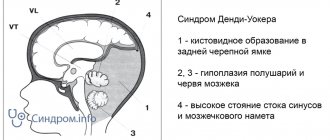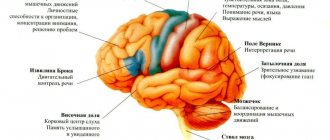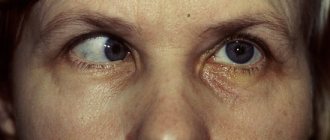What is astheno-neurotic syndrome? This is a set of vegetative, neurological and psycho-emotional manifestations that occur against the background of a violation of the body’s adaptation, doctors call astheno-neurotic syndrome (asthenoneurosis). Such a deviation is possible with any pathology, the influence of mental or physical stress. The problem is identified at different periods of life. It does not allow adults to adequately respond to reality, nor does it allow children to develop according to their age. Emotional instability in children inhibits the processes of proper formation of intracerebral neural connections, therefore intellectual abilities slow down and the development of new skills worsens.
The syndrome is especially often diagnosed in children who have a delicate, very vulnerable mental organization. It is difficult for them to firmly respond to failures and control their mood. Treatment of asthenoneurosis usually consists of light psychocorrection, which helps to establish social relationships and quickly overcome one’s emotions.
Pathology or fiction?
Russians usually consider children's behavioral problems to be tiredness or poor upbringing. But according to the ICD, asthenoneurosis is recognized as a disease, having a personal code of F48.0. In the same category there are other neurotic disorders that require medical attention. Therefore, you need to be prudent, feel responsible for the child and treat him in a timely manner.
General information
Neurasthenia ( asthenic neurosis , astheno-neurotic syndrome ) is a mental disorder belonging to the group of neuroses , which develops as a consequence of prolonged mental or physical overload.
Answering the questions “asthenoneurotic conditions, what is it” and “who is susceptible to this disorder”, it should be noted that this condition usually develops in young people. It is associated with past stress, strong emotional experiences, constant problems with sleep, etc. Often this disorder occurs when mental trauma is combined with too hard work, lack of sleep, lack of normal rest, etc. Neurasthenic syndrome often develops in those whose bodies are weakened infections, smoking, alcohol, poor diet, etc. The signs of neurasthenia were first described by the American doctor George Beard - this was in 1869. Later, the diagnosis of “neurasthenia” became very popular - it was made very often, but at the same time the term acquired an increasingly broader meaning.
ICD-10 code for astheno-neurotic syndrome (neurasthenia) is F48.0. People who develop asthenic symptoms are irritable, easily excited, have difficulty concentrating on anything, and complain of fatigue. They find it difficult to fall asleep and wake up.
Treatment of this condition is carried out not only with medication. It is also necessary to adjust your daily routine and lifestyle.
What is neurasthenia, symptoms and treatment of the disease - this will be discussed in the article below.
VARIETIES OF SYNDROME
Experts have come to the conclusion that astheno-neurotic syndrome in children is a disease that can be found in such forms as:
- Cerebrasthenic asthenoneurosis is a congenital pathology caused by organic lesions of the brain.
- Residual asthenia is a congenital type of neurosis that occurs as a result of pathology of the nervous system or as a result of a birth injury to the head. Manifestations of this type of disease are tearfulness, enuresis, and impaired fine and gross motor skills.
- Somatogenic asthenia is a type of psychosomatic illness. As a rule, this type of neurosis develops in children with a history of disturbances in the functioning of the digestive system in the form of gastritis and ulcerative lesions of the duodenum.
- Dysontogenetic asthenia, the main symptoms of which are chronic fatigue, low performance and poor concentration on an intellectual task.
- Psychosocial neurasthenia is a neurosis that arises as a consequence of an unfavorable situation in the family. In adolescence, this form of asthenia can develop as a result of the child’s rejection by his peers. This type of disease is manifested by insomnia and frequent headaches.
- Hyperdynamic asthenia is a form of neurotic disorder in preschool children. It manifests itself in the form of motor disinhibition, restlessness, and fussiness of the child.
- Hypodynamic asthenia is a type of neurosis in which the processes of inhibition in the nervous system prevail over the processes of excitation. The child is passive, inactive, immersed in his own inner world, avoids communication with peers and active games. The main cause of this type of disease is underweight or overweight, weak muscle tone, and a tendency to catch colds.
Pathogenesis
The basis of neurasthenia is a psychological conflict, the essence of which is the contradiction between desires and capabilities.
In the pathogenesis of neurasthenia, both somatic and mental factors are important. The main role is played by the individual’s reaction to psychotrauma. In this case, not only objective life circumstances are important, but also how the patient relates to them. With neurasthenia, there is a contradiction between the individual’s capabilities and his demands on himself. This discrepancy is covered by internal resources and mobilization of efforts, which ultimately leads to disorganization of the body.
Does psychotherapy help with VSD?
A psychotherapist for VSD affects the psycho-emotional sphere using various methods. In most cases, after treatment for neuroses and psychological disorders associated with VSD, complete recovery occurs. During sessions, psychotherapists teach techniques to curb the manifestation of derealization and agoraphobia.
Psychotherapists use structured techniques to help relieve the patient from the manifestation of these disorders. During sessions, the patient can trust the specialist and talk about his experiences. If you need advice from a psychotherapist or other clinic specialists on the treatment and diagnosis of VSD and its manifestations, make an appointment by calling the Yusupov Hospital.
Classification
The astheno-neurotic condition can have three forms:
- Hypersthenic neurasthenia is the initial stage of neurasthenia, and it is the one that manifests itself most often. This condition is characterized by excitability and irritability . The patient can be irritated by seemingly ordinary things - crowds of people, noise, etc. They lash out at loved ones and relatives, often scream and get nervous. At the same time, such people’s performance decreases due to mental lack of composure, overwork and absent-mindedness. If a person does start working, he is often distracted, reacts to stimuli, etc. As a result, his labor productivity is very low. Severe sleep disturbances are also noted: the patient has difficulty falling asleep, often wakes up, and is bothered by disturbing dreams associated with the worries that exist in his life. As a result, he feels tired in the morning, not having time to recover during the night. The consequence of this is a bad mood, a feeling of exhaustion with a girdling headache . In addition, with this form of neurasthenia, general weakness, memory impairment, and unpleasant somatic sensations are noted.
- Irritable weakness is the second stage of the disease, which is intermediate. During this period, a person experiences so-called “irritable weakness” - a condition in which excitability and irritability are combined with severe fatigue and rapid exhaustion. Violent outbursts of irritation arise even for minor reasons. Such outbreaks are short, but occur very often. The patient may experience tearfulness, which was previously unusual for him. Another characteristic sign of this phase is intolerance to bright light, noise, and strong odors. The ability to control your emotions is lost. The mood can change dramatically, and there is a tendency towards gloom and depression. If we are talking about a severe form of neurasthenia, there may be a symptom of depression, exhaustion, manifested by lethargy and indifference to what is happening in life. At this stage, problems with sleep and appetite are noted. Drowsiness bothers you during the day and insomnia . Digestive problems also appear - heartburn, belching, constipation , etc. The headache often occurs, and problems in sexual life may begin.
- Hyposthenic neurasthenia - at the third stage of the disease, exhaustion and weakness predominate. The main signs of this disease during this period are apathy , drowsiness , weakness, lethargy. A person is unable to mobilize and work; he is constantly bothered by thoughts about unpleasant somatic sensations. Asthenia is noted against the background of low mood. Anxiety and weakening of interests may appear, but in general the mood is characterized by a neurotic character and emotional lability. Hypochondriacal complaints and fixation on internal sensations are common. If the astheno-neurotic state is treated correctly during this period, then over time the healing process begins - sleep improves, the severity of depressive phenomena decreases.
general characteristics
A brief description of the astheno-neurotic psychotype is determined by the following character traits and characteristics:
- increased fatigue;
- irritability, short temper, lack of restraint;
- often - bad mood;
- in the morning - drowsiness and “weakness”;
- hypochondria;
- sudden affective outbursts at the slightest, meaningless reason;
- emotional breakdowns when plans fail;
- accuracy;
- discipline, diligence, flexibility;
- low self-esteem;
- due to excessive fatigue - forgetfulness, lethargy, low activity;
- physical labor is more preferable than mental labor.
The astheno-neurotic type is included in the classification of character accentuations according to Lichko. Leonhard calls it anxious-fearful.
Recommended hobbies for an astheno-neurotic person are any collecting, as well as non-exhausting sports (like stretching or Finnish walking).
The most striking examples of famous fictional astheno-neurotics are Eeyore from Winnie the Pooh and Melman the giraffe from Madagascar.
An example from life. A young woman came to see a family psychologist. She recently married her colleague. They worked together for 2 years. At the same time, he was a very disciplined and efficient worker: he always submitted all reports on time, was never rude to anyone, and never gossiped with anyone. When they started dating, it seemed to her that he focused too much attention on himself, namely on his even the most minor ailments and problems. But overall, they had a good relationship and got married. After that, everything went wrong: after work, the husband literally fell on the sofa and got up only a couple of hours before bedtime to have a snack and take a shower. He was exhausted from any effort - both moral and physical. And, of course, the lion's share of the family budget began to go to his ghostly, most often fictitious, illnesses. She was tired of this and came to ask for advice from a psychologist, who explained to her that her husband was a typical representative of the astheno-neurotic psychotype.
Causes
Neurasthenia develops in people against the background of mental and physical overload, which, in turn, provokes overwork of the body. The reason for the development of this condition can be internal conflicts, a weak psyche, long-term adherence to a very strict diet, etc.
The occurrence of neurasthenia is influenced by predisposing and provoking factors. Predisposing ones include:
- increased anxiety;
- tendency towards perfectionism;
- period of recovery after somatic illnesses.
Provoking include :
- severe stress;
- conflict situations in the family and at work;
- lack of normal rest for a long time;
- previous traumas, including birth injuries;
- previous surgical interventions;
- infectious diseases;
- poor nutrition and, as a result, deficiency of vitamins and other important substances;
- alcohol abuse, smoking;
- lack of physical activity;
- lack of sleep;
- intoxication;
- endocrinological disorders;
- unfavorable psychosocial conditions;
- severe weather conditions, etc.
Derealization in VSD
VSD and mental disorders can manifest themselves against the background of mental trauma, strong experiences and physical and nervous exhaustion. Some patients with VSD develop signs of mental disorders that do not allow them to lead a full life.
The feeling of unreality of what is happening during VSD or derealization is the brain’s reaction to stress. With this disorder, a person perceives the world around him as distant and unreal.
This disorder is different from panic attacks. The main signs of derealization are:
- perception of reality as unreal;
- changes in the perception of sounds, colors;
- feeling of weakness;
- increased blood pressure;
- fear of madness.
Against the background of these symptoms, the patient maintains adequate behavior and controls his actions. If signs of derealization appear, you must immediately consult your doctor who will prescribe treatment.
When treating derealization, it is necessary to get rid of bad habits and optimize time for rest and work. At the Yusupov Hospital, experienced psychotherapists interact with patients who have a feeling of unreality of what is happening with VSD, who use safe methods to eliminate depression and other manifestations of the disorder.
Symptoms and signs of neurasthenia
Signs and symptoms of astheno-neurotic syndrome depend on the stage of the disease.
- At the first stage, the symptoms of neurasthenic syndrome are: irritability, unstable emotions, severe excitability, aggressiveness, tearfulness. Women often have a tendency to become hysterical and experience mood swings.
- At the second stage, symptoms of neurasthenia in adults and children are manifested by a general loss of strength, fatigue, and weakness. immunity deteriorates , which can lead to somatic diseases.
- The third stage is characterized by depression. The patient wants peace and loneliness, he exhibits apathy and lethargy, and lacks joy in life.
In general, the symptoms of neurasthenia can be very diverse. The most typical of them are characterized by a weakening of the functions of internal inhibition.
- Irritability – lack of restraint is manifested, which was previously uncharacteristic. Even minor reasons can lead to the patient reacting violently to them with shouts and actions.
- Sensitivity to minor irritants - for example, the patient can be very irritated by the rustling of paper, the sound of operating equipment, etc.
- Frequent emotional outbursts – characterized by frequent but short manifestations of rage. During such attacks, consciousness is preserved.
- Tearfulness is increased excitability, which was previously unusual for humans.
- Absent-mindedness and memory impairment - concentration of attention becomes more difficult, so the patient tries to avoid mental effort.
- Problems of a sexual nature – in men, premature ejaculation is possible, and this can subsequently develop into an obsessive syndrome. It is difficult for women to find pleasure during sexual intercourse because they cannot distract themselves from obsessive thoughts. If the problem worsens, it can lead to frigidity in women and weakened potency in men.
- Increased sensitivity - irritating sound, light, increased sensitivity to heat and cold.
- Insomnia – due to thinking about problems, the patient cannot fall asleep at night. This ultimately leads to fear that he will never be able to fall asleep, which ultimately makes the situation worse.
- Feeling of morning exhaustion - the patient wakes up in a bad mood, he does not want to get out of bed. However, in the evening he feels a little more alert, which prevents him from going to bed on time and fully resting.
- Constant fatigue, both physical and mental. A feeling of emptiness is typical - nothing pleases the patient, everything seems gray and faceless.
- Headaches - characterized by a girdling pain, as if a helmet was put on the head.
- Somatic manifestations - the back and muscles may ache, sweating appears, problems with the gastrointestinal tract, frequent urination, etc.
If timely and adequate treatment is not provided, neurasthenia can lead to diseases of both a neurological and physiological nature.
GENERAL INFORMATION ABOUT PATHOLOGY
Neurasthenia in children is a symptom complex that occurs as a result of exhaustion of the nervous system. The symptoms of neurasthenia in children differ from the signs of neurasthenia in adults.
Doctors call this disease irritable fatigue syndrome. Asthenoneurosis occurs not only in children, but also in adolescents. This disorder is one of the common causes of a decrease in a child’s school performance and conflict in relationships with peers and adults.
Asthenoneurosis can be a consequence of intrauterine pathology of the development of the nervous system, birth trauma, or an infection suffered by the baby in the early postnatal period. In this case, signs of the disease appear at 2–3 years. The disease can also develop at school age as a result of excessive stress on the nervous system.
Symptoms and signs of neurasthenia in children should be a reason to visit a doctor. Without timely treatment, they will lead to irreversible changes in the child’s psyche.
Tests and diagnostics
The specialist carries out diagnostics, assessing the clinical picture, as well as the complaints of the patient and his loved ones. In the process of establishing a diagnosis, it is imperative to visit a therapist and carry out the examinations that he prescribes in order to exclude other diseases.
Since neurasthenia can be a sign of brain diseases. Therefore, it is important to conduct a CT scan or magnetic resonance imaging to rule out such diseases. The doctor may also prescribe rheoencephalography to assess blood circulation in the brain.
You can take a test for neurasthenia on a variety of online resources. However, such a test cannot be considered an analogue of diagnosis - it can only be used to confirm or refute the presence of a predisposition to such a disease.
Treatment with folk remedies
Folk remedies are used as an auxiliary method of treating neurasthenia. Herbal sedatives can be used to help reduce irritability and other symptoms. However, it is important to remember that any folk remedies may have certain contraindications. Therefore, it is better to consult your doctor first.
- Herbal teas . They can be prepared from chamomile, peppermint, and lemon balm. You can drink them separately or prepare a collection. To prepare tea, take 1 tbsp. l. mixture in 250 ml of boiling water, leave for 10 minutes. You need to drink this tea 2-3 times a day, 150 ml. You can also add rose hips and oregano to this tea. It is recommended to drink herbal tea with honey.
- Motherwort . Helps reduce the severity of symptoms of neurasthenia. To prepare the product you need 2 tsp. pour 200 ml of boiling water over the raw material and leave for 8 hours. Strain and drink throughout the day. Similarly, you can prepare an infusion of St. John's wort.
- Hawthorn . 3 tbsp. l of hawthorn fruit, pour 250 g of boiling water and leave for half an hour. Drink 150 ml half an hour before meals three times a day.
- Celery greens. It is recommended to add it to salads and soups. You can also prepare an infusion, pour 3 tbsp. l. celery 250 g boiling water. Fresh dill is similarly useful for neurasthenia.
- Beetroot juice . Fresh beet juice is mixed with natural honey in a 1:1 ratio. You need to drink 100 g 3 times a day for a month.
- Valerian root . 1 tbsp. l of the product, pour 250 ml of boiling water into a thermos and leave overnight. Drink 70 g three times a day for 1-2 months.
Prevention
In order to prevent astheno-neurotic syndrome, it is necessary to adhere to the following recommendations:
- Practice an optimal daily routine: go to bed on time and get up early.
- Be sure to take full rest on weekends and ensure rest during the working day.
- Monitor your diet: do not skip meals, ensure a nutritious and varied diet.
- Stop smoking, minimize the amount of alcohol, tea and coffee.
- Identify sources of stress and eliminate them.
- Practice physical activity by playing sports several times a week; to walk outside.
Features of communication
Among all other character accentuations, the astheno-neurotic personality type is one of the most unpredictable in terms of communication. It may seem soft and sensitive at first. But then it turns out that he is subject to strong outbursts of anger and invents problems for himself and the people around him literally out of nowhere.
- Singles
They are friendly, but will always prefer loneliness to companies. And not because they avoid communication. They just quickly get tired of the noise, intrusive looks and questions.
- Mood swings
Because of their temper, they are often rude, rude and throw tantrums even to close people. When the outburst of rage passes, they begin to very sincerely ask for forgiveness, because they feel guilty.
- Not fighters
They do not like to argue and enter into conflicts. When such a situation arises, they immediately give up, without even accepting the fight.
Recommendations for communicating with an astheno-neurotic person:
- Avoid creating situations of conflict and competition.
- Do not be offended by rude things said during outbursts of rage. Wait patiently for them to finish and then talk calmly.
- Do not force an astheno-neurotic person to go to noisy parties and do not invite too many guests home.
- Do not get carried away with criticism, so as not to completely kill the desire to do something. Praise more, notice and highlight positive aspects. Take a position of leniency towards mistakes.
- Do not offer to watch horror films and melodramas. Comedies and something from the popular science genre are the few things that definitely won’t upset an asthenic-neurotic personality.
- In communication, be friendly and calm.
- No jokes or irony in his direction - he won’t understand, he’ll be upset or offended.
- Don't give surprises. No unexpected questions or meetings. Agree on everything in advance.
- Know the daily routine of an astheno-neurotic person and do not violate it.
In general, the secret of successful communication with people of the astheno-neurotic type is quite simple. It is better to plan the meeting around the middle of the day, somewhere from 11.00 to 15.00. In the morning they feel completely exhausted after the night - they need time to focus on their internal resources in order to complete the necessary tasks. When they get involved, they forget about illnesses and grievances. If they are not irritated at this moment, there is a calm atmosphere around, they are the nicest and kindest people. However, then they run out of steam, get tired and are no longer capable of adequate communication.
Astheno-neurotic syndrome in children
Nervous disorders in children can be the result of psychological trauma that occurs as a result of severe fright, fear, or a traumatic situation. Neurasthenia in children can manifest itself with a variety of symptoms: finger sucking, nail biting, stuttering, nervous tics, etc. The child is constantly in a bad mood, eats and sleeps poorly.
Psychologists say that the manifestation of neurasthenia in children is often associated with the child’s feeling that he cannot meet the high demands of his environment. As a result, the child feels that he cannot cope with difficulties.
Therefore, it is very important that parents perceive the child as he is. Their demands should not be excessive. The child must be treated patiently and shown understanding even in difficult situations.
Factors contributing to the development of neurasthenia in children:
- emotional isolation of the child in the family;
- poor psychological compatibility between parents and children;
- frequent conflicts;
- overwork at school or due to additional activities;
- alcoholism or mental illness of parents;
- inconsistency in education;
- too high demands from parents, etc.
It is important to promptly pay attention to changes in the child’s mood and consult with a specialist.
Diet
Diet for the nervous system
- Efficacy: therapeutic effect after 2 months
- Timing: constantly
- Cost of food: 1700-1800 rubles per week
A very important point is proper nutrition for neurasthenia. The diet should be enriched with vitamins and minerals, as well as all nutrients important for the body. It is recommended to include the following foods and dishes in your diet:
- whole grain cereals;
- honey, dried fruits;
- fresh vegetables and fruits - bananas, greens, cabbage, asparagus, citrus fruits, sea buckthorn, currants;
- liver;
- Brewer's yeast;
- Fish and seafood;
- cheese, dairy products.
The following should be completely removed from the menu:
- fat meat;
- sugar and confectionery;
- spicy dishes;
- nuts, seeds;
- sauerkraut;
- alcohol.
Consequences and complications
With a prolonged course of the disease, nervous processes are depleted, which leads to the development of a number of diseases. Often patients with neurasthenia complain of insomnia , chronic headaches and intestinal manifestations. They may develop eating disorders ( anorexia , bulimia , etc.). Possible phobias, obsessive thoughts, paresthesia . In women, libido may decrease, and in men, potency may decrease.
With neurasthenia, it is difficult for a person to maintain social connections. Over time, psychological problems worsen and against this background, severe mental illness can develop.









